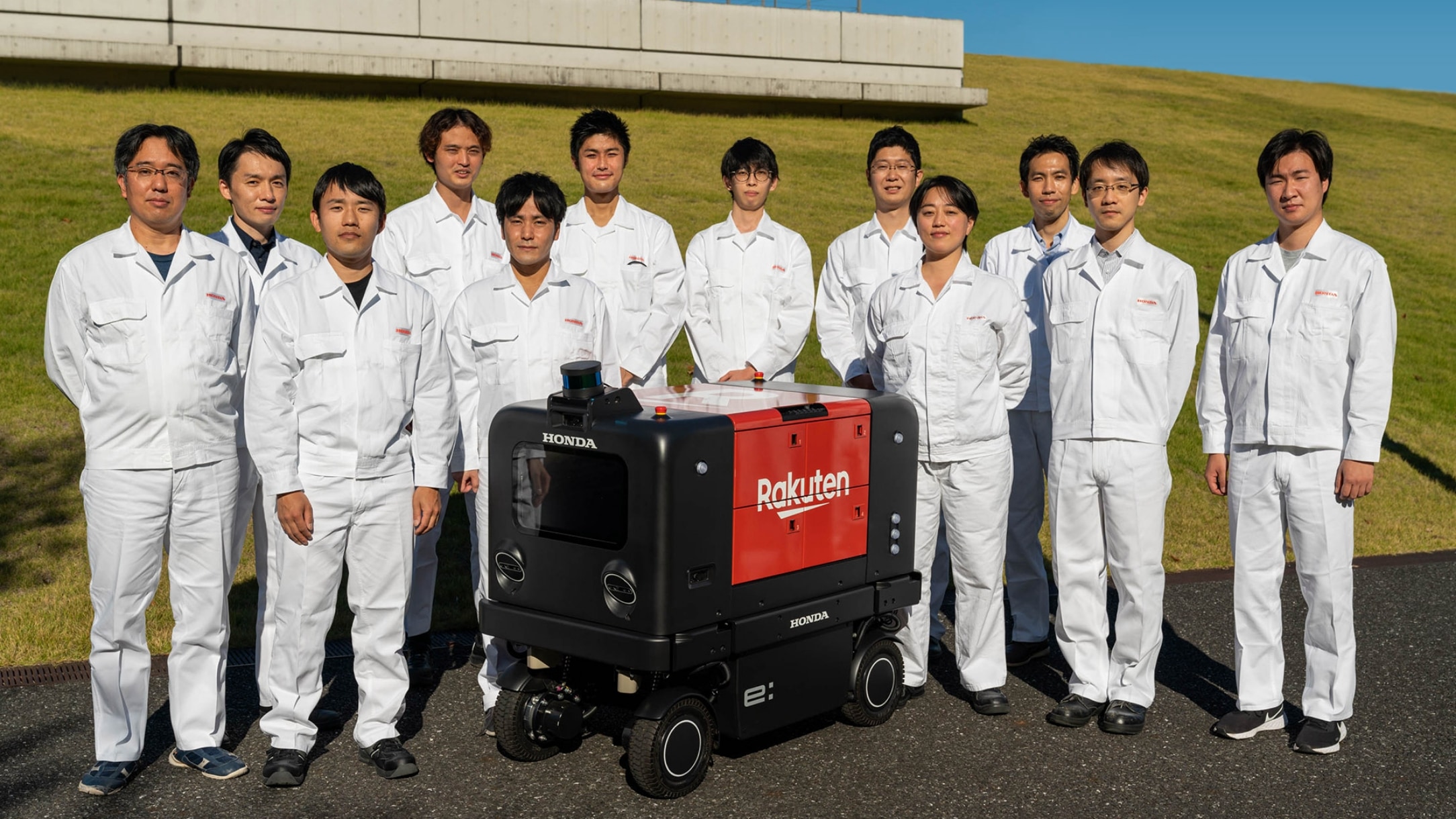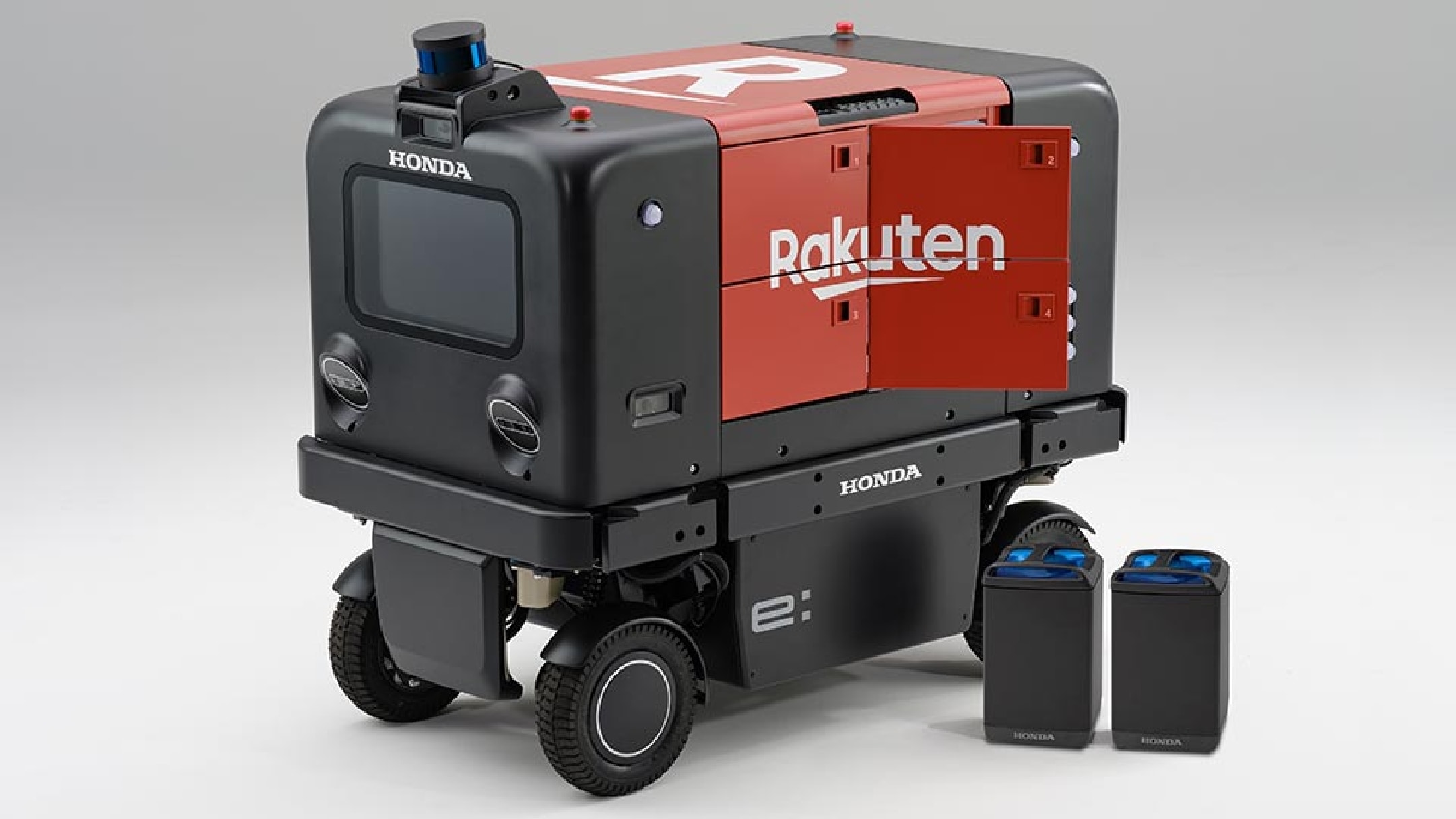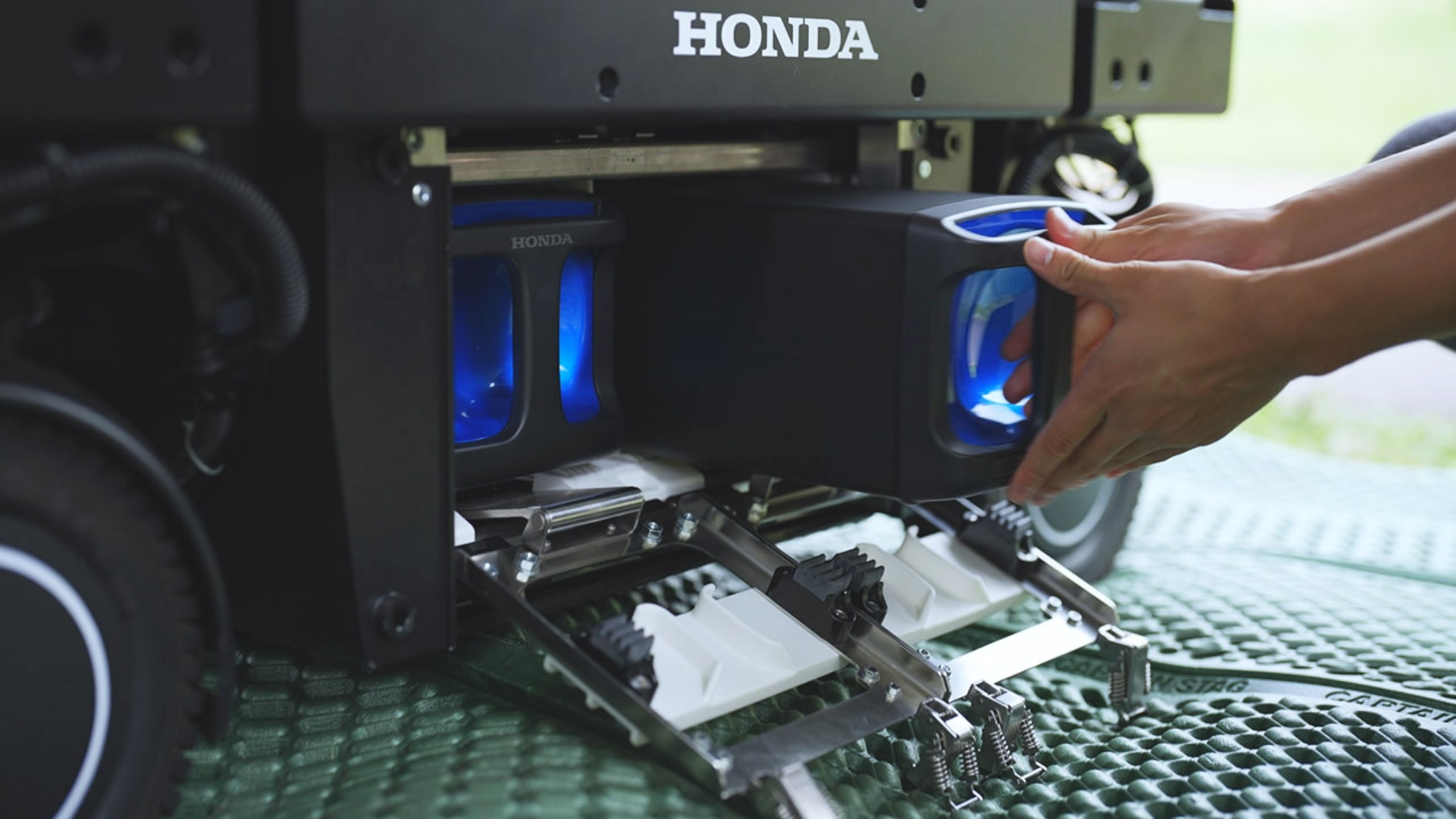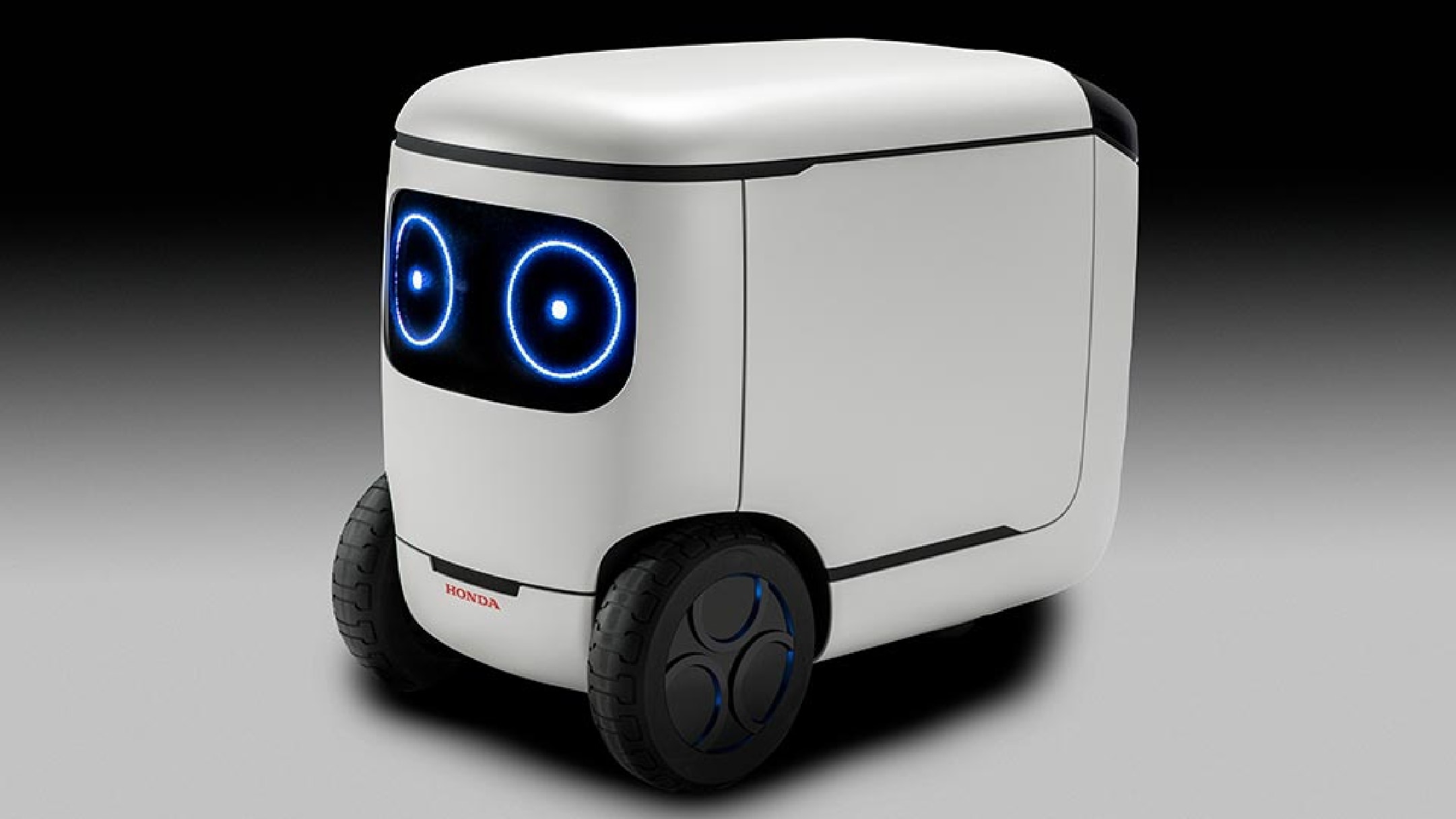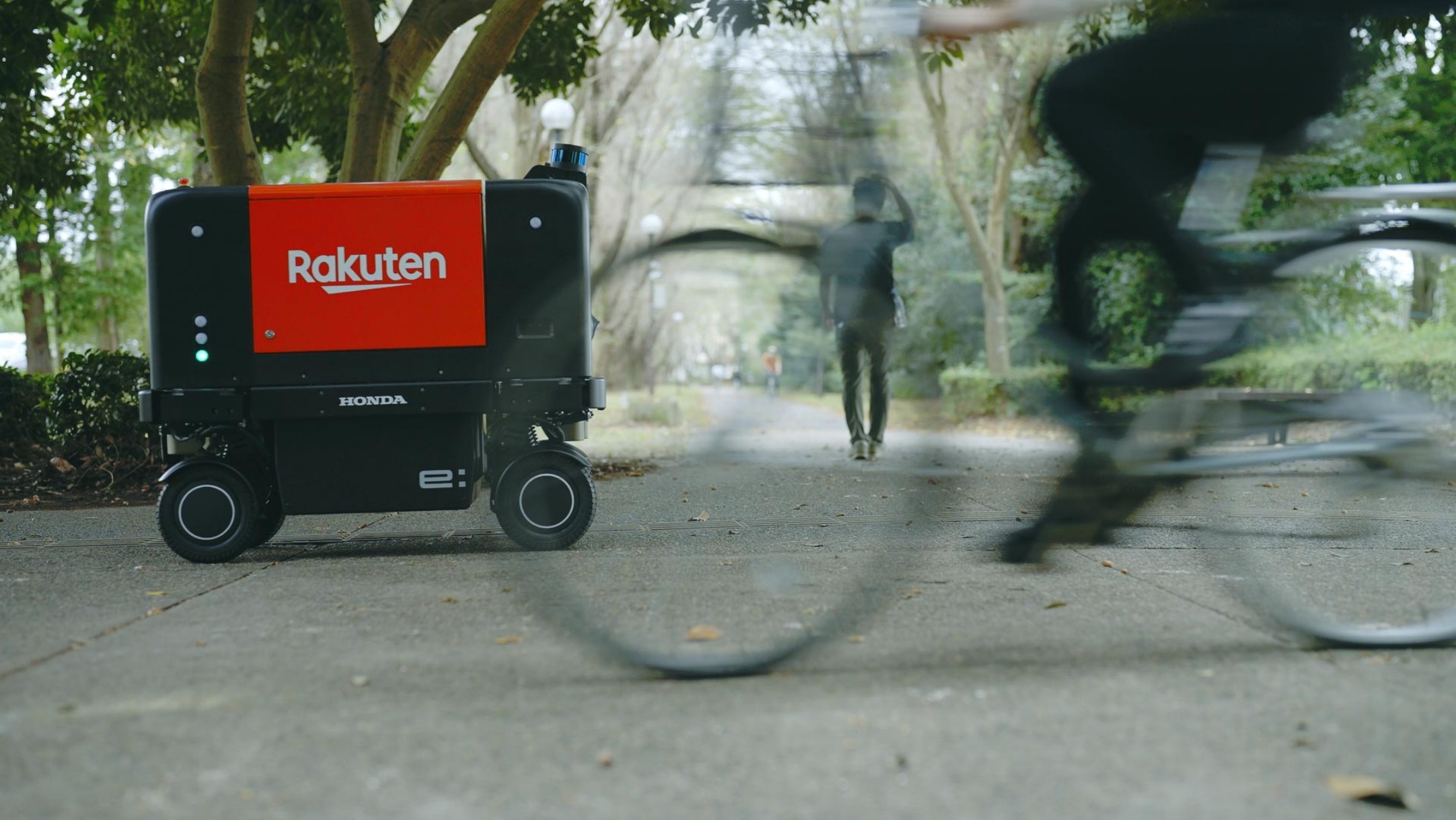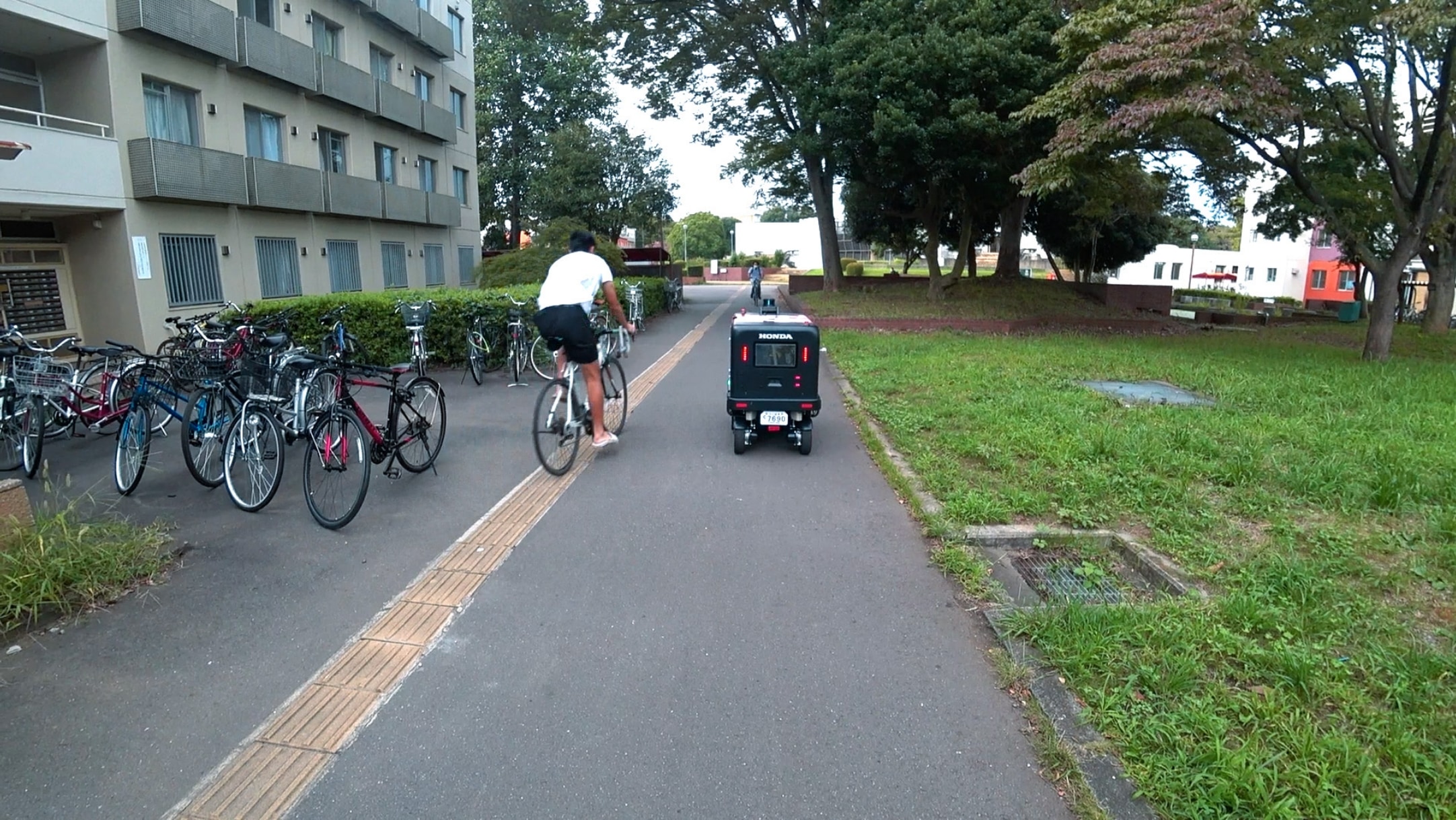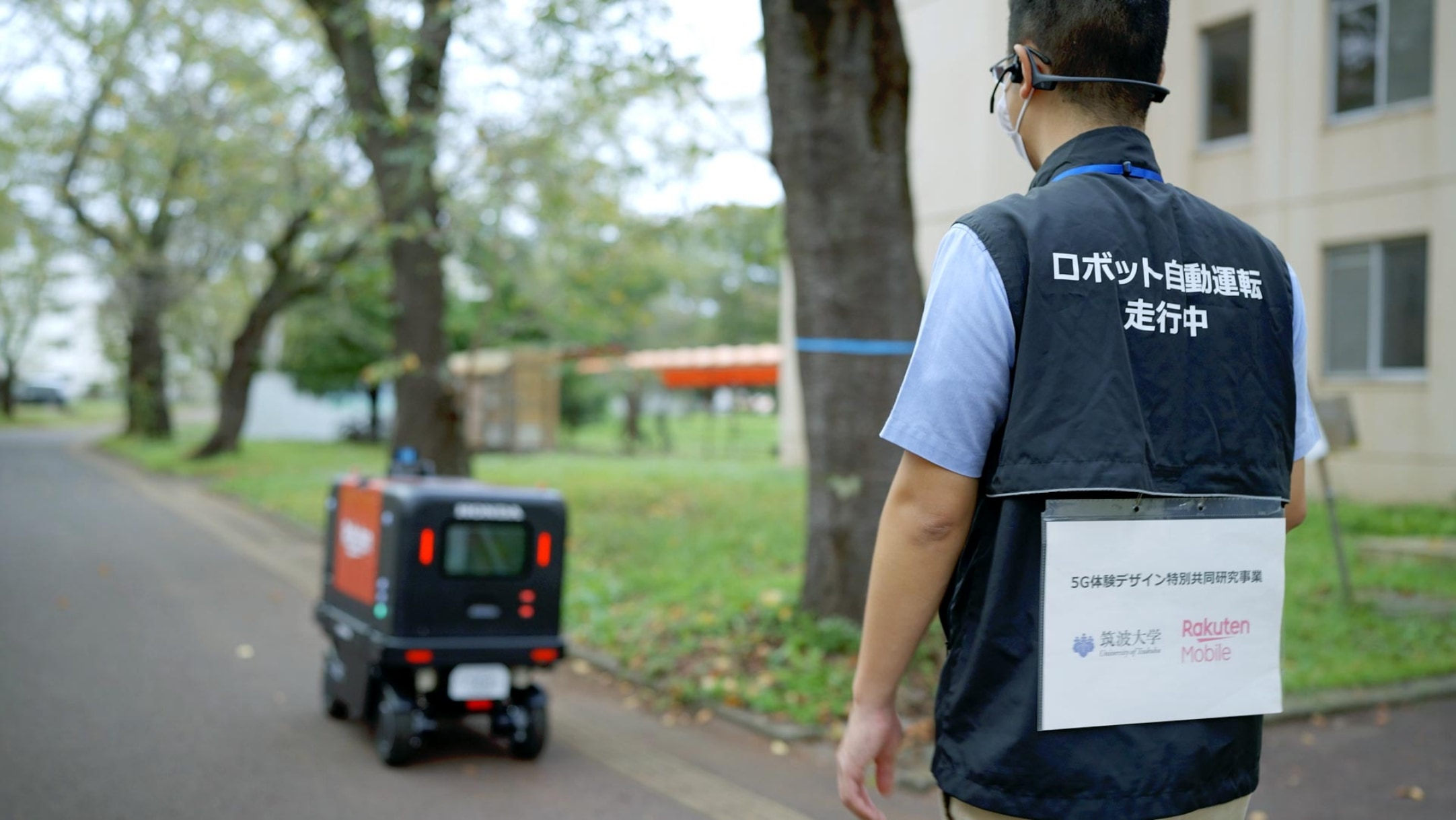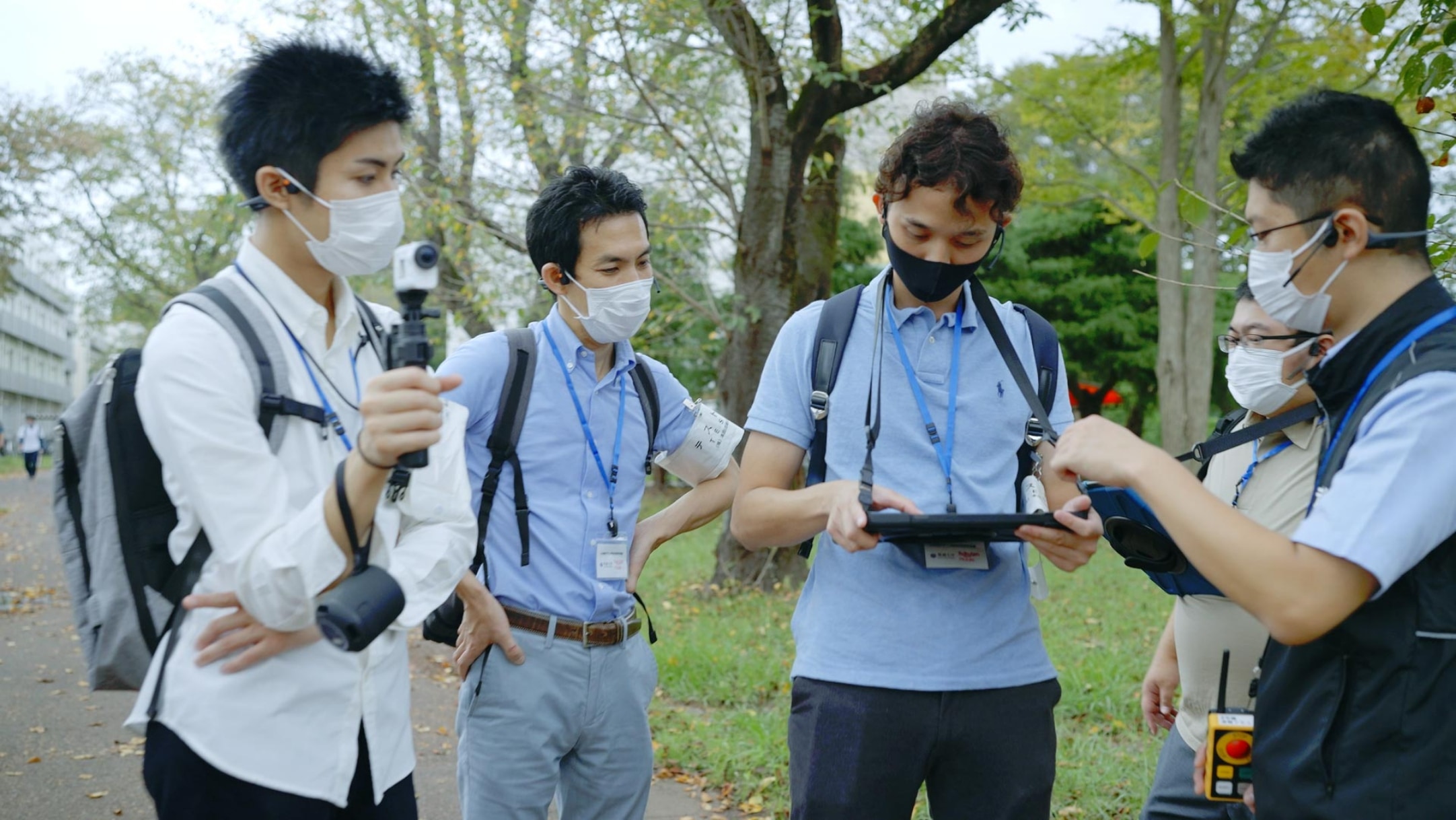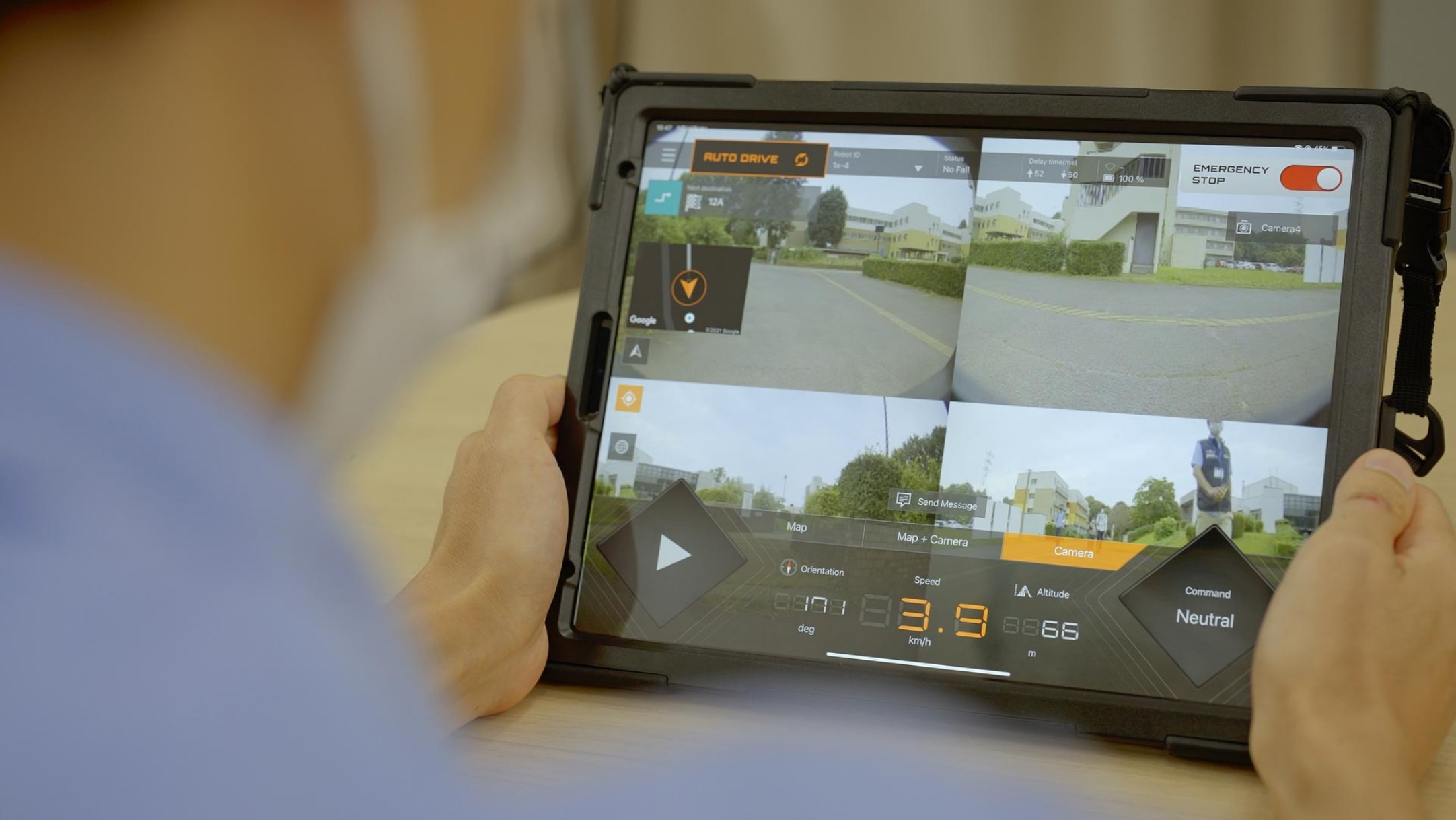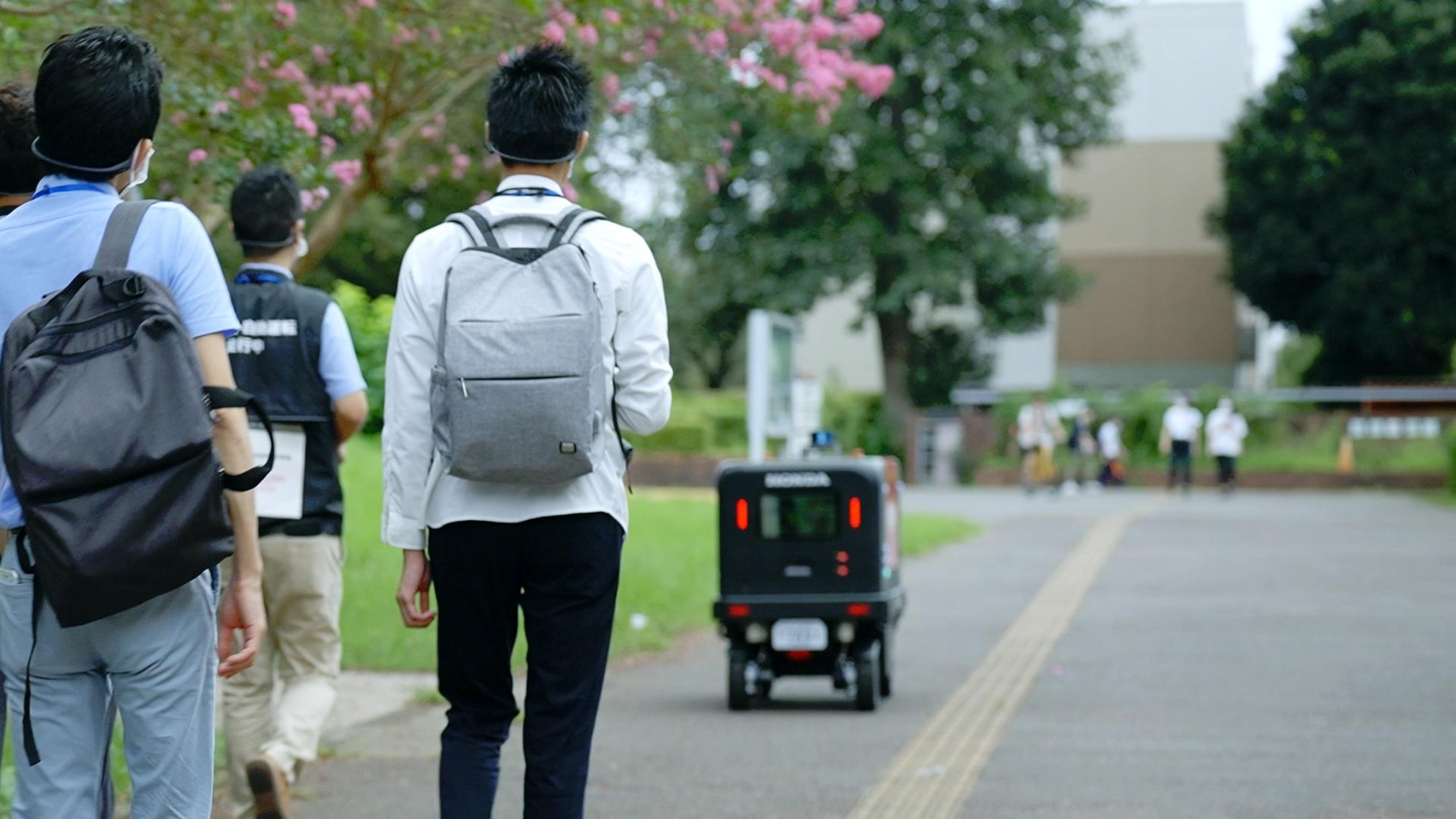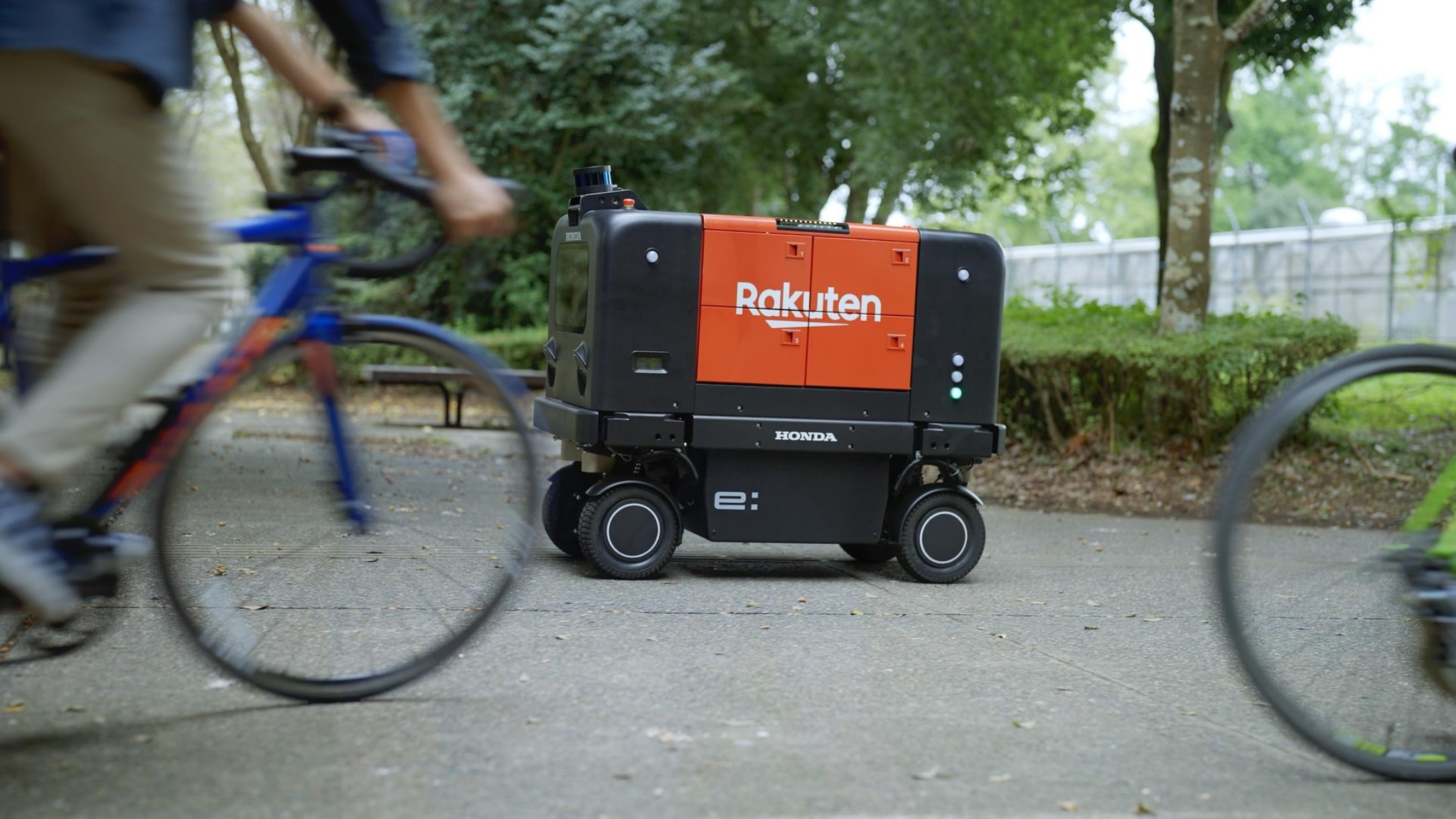Field Trial of Autonomous Delivery Robot Operation
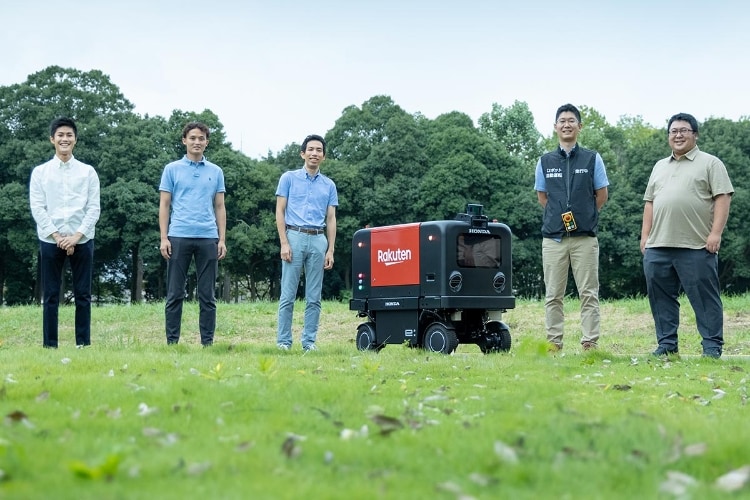
Developing Autonomous Mobility on Roads Used
by Pedestrians and Bicyclists
Field Trial of Autonomous Delivery Robot Operation
Development Story
For many years, Honda has been conducting robotics research with a view toward the realization of a society where humans live safely with robots. As part of this, Honda has recently participated in a technology development project run by the New Energy and Industrial Technology Development Organization (NEDO*1) together with Rakuten Group, Inc. and carried out a field trial of operating autonomous delivery robots. The trial was conducted in an environment that included pedestrian and bicycle traffic to identify necessary improvements as well as issues that must be resolved to ensure the safe operation of autonomous delivery robots in an environment populated by humans.
*1NEDO (New Energy and Industrial Technology Development Organization)
Contents
Honda Looks Forward to a Society Where
Humans Live with Robots
Since its foundation, Honda has been researching humans with the conviction that technologies are there for the benefit of humans. Honda has studied humans in-depth in line with its corporate stance and a vision towards pushing forward with robot research. Honda has set its goal to lead the advancement of mobility and enable people everywhere in the world to improve their daily lives by serving them with the joy of expanding their life's potential.
Honda has long been focusing its resources on researching robots that co-exist with humans. Its achievements include ASIMO, the humanoid robot, introduced in 2000. To ensure robots will be able to help people’s lives in the future, the value offered by robots need to be recognized, and people need to adapt to enable robots to play a larger role in their lives. In other words, robots need to be socially accepted.
To expand the role that robots play in society, Honda took part in a field trial operating an autonomous delivery robot. The goals of the project, part of NEDO's project for Technological Development toward the Realization of a New Delivery Service Using Automatically Operating Robots, are to meet the increasing need for remote, non-face-to-face and non-contact last-mile distribution during the COVID-19 pandemic and resolve emerging social issues including the shortage of delivery workers due to the aging population and declining birthrate.
Honda will identify requirements and technical issues on functions, performance and safety of autonomous delivery robots and clarify the obstacles needed to be cleared to see these robots accepted in society. In so doing, Honda will serve humans and society and accelerate the robot research.
Difficulties are Encountered Using Autonomous Delivery Robots
Autonomous delivery robots make decisions independently in order to reach their destinations. Automobiles with autonomous driving systems predict the movements of other vehicles that run in a fixed direction in compliance with traffic rules. However, autonomous delivery robots need to move safely and adapt to their surroundings which include pedestrians and cyclists. The movements of pedestrians and cyclists are often less predictable.
This greatly increases the variety of things that may occur, and the robots must be able to autonomously operate in this more complicated and challenging environment. The operational field trial is being conducted in an area with homes, stores and open spaces, where people and cyclists move on the roads that link them. Imagine the case of a bicycle approaching an autonomous delivery robot from its front while it moves along the shoulder of a road.
The robot must autonomously predict whether the cyclist will pass beside the robot or not notice the robot and crash into it, which is no easy feat. In consideration of delivery times, it is important to ensure that robots are able to move smoothly without stopping too frequently in ways that avoid creating hazards for other pedestrians and cyclists in this complex environment. Honda is working to identify latent obstacles to their operation.
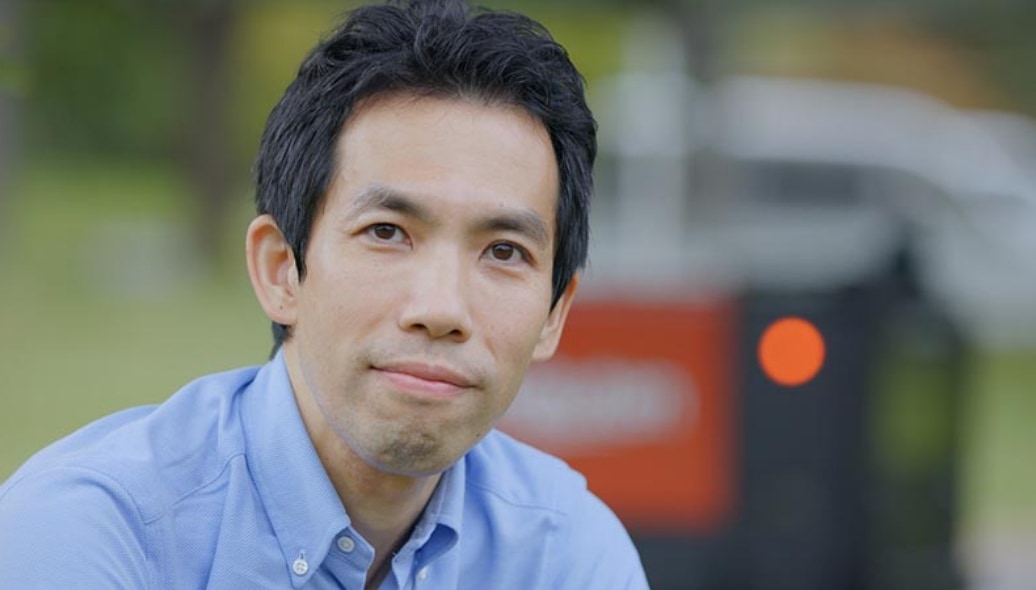
Takahiro Ariizumi
Life Creation Center
Honda R& D Co.,Ltd
After joining Honda in 1999, Ariizumi engaged in research and development of ASIMO's facial recognition and other features for interactions between humans and robots. Since 2020, he has been a project manager for the demonstration trial of autonomous delivery robots.
Details of the Operational Field Trial
Before the trial began, Honda estimated patterns that people would follow when approaching and interacting with the autonomous delivery vehicle, the frequency of people approaching and interacting with the robot, as well as the level of hazard to them. Honda verified the estimated risks and developed hypotheses as to the scope of sensing and items to be detected to avoid risks, and then carried out the trial to examine the accuracy of the hypotheses on the basis of what occurred in practice. Honda is checking the appropriateness of the hypotheses and identifying whether there are technical requirements which need to be updated.
How Robots Should Move in an Environment that
Includes Humans
For example, when two people pass each other on a narrow path, they naturally avoid each other or one of them stops to give way to the other. However, it is difficult to predict what action a person will take when passing a moving robot, which is still unfamiliar to society. In the same situation, some may give way to the robot while others may not, expecting that the robot will stop. Honda explores the balance between areas where the robot should make autonomous decisions to act and areas where it should encourage humans to give way. In order to improve this area of interaction we are considering equipping the robot with the capability to act in ways that are easy for people to understand by perfecting the speed and timing of movements and using LED displays and other means of communication.
Findings from the Operational Field Trial
The recent trial conducted on roads with pedestrians and cyclists moving in erratic ways allowed us to examine an array of hypotheses. Honda learned that some predictions were appropriate and that some estimates were too loose or too rigid. Examining the accuracy of different hypotheses enabled an analysis of the safety requirements that autonomous delivery robots must fulfill to progress. In addition, Honda realized that a unified set of rules for autonomous vehicles when setting off, turning left or right and signaling to the surroundings must be established to enable autonomous delivery robots to be accepted by the public.
Honda will share the findings of the trial as the achievements of NEDO's Project for Technological Development toward the Realization of a New Delivery Service Using Automatically Operating Robots. Honda will help create a common set of rules with a view toward future practical applications of autonomous delivery robots in society.
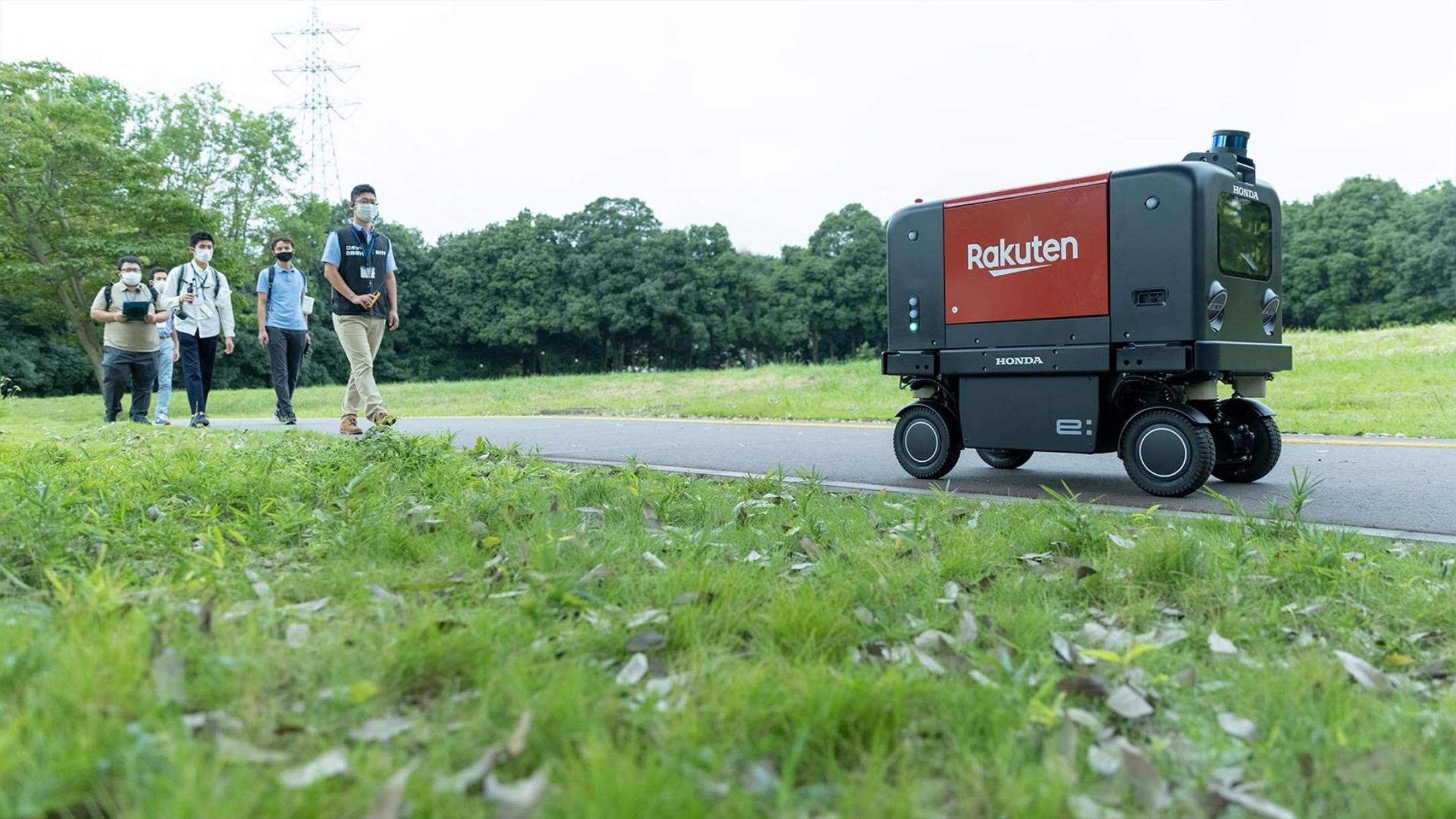
Honda Uses Its Strengths as a Mobility Company to Contribute to Society
Honda has accumulated knowledge and research about moving safely in environments that include humans through years of robotics research. Honda has also manufactured motorcycles, automobiles, products to improve consumers' lifestyles, and other products that can be used safely by society. Taking advantage of its expertise in development, design and manufacturing that it has acquired and its other strengths as a mobility company, Honda will work to develop high-quality autonomous delivery robots in harmony with humans.
In the future, Honda will conduct demonstration trials of autonomous delivery robots on public roads in a continuing effort to lead the evaluation of mobility and improve the lives of people around the world with a view towards establishing a society where humans and robots coexist.
